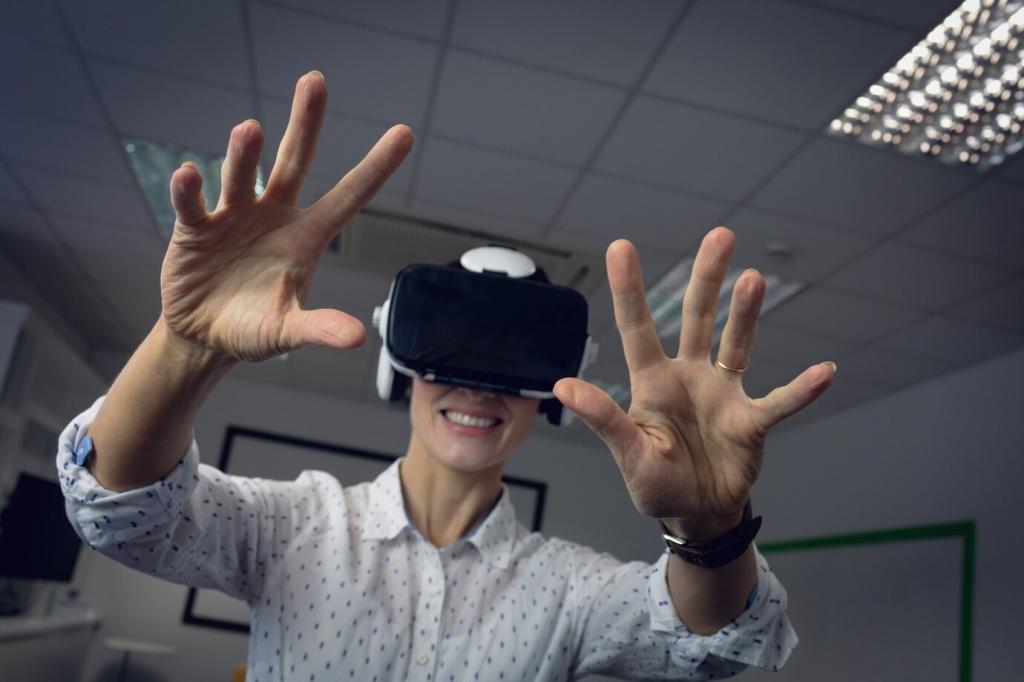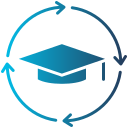Virtual reality (VR) is rapidly transforming the landscape of education, offering immersive, interactive, and highly engaging experiences that go beyond traditional learning methods. By simulating real-life environments and scenarios, VR enables students to explore concepts in detail and gain hands-on experience without the constraints of time or location. As developers and educators continue to innovate, VR is poised to become an integral part of classrooms around the world. This page explores the most promising future trends in the use of virtual reality for education, highlighting how this technology will revolutionize learning outcomes, access, and the overall student experience.
Enhanced Immersive Learning Experiences
Personalized Learning Environments
With the integration of artificial intelligence and VR, the future holds the promise of tailored lessons for every student. VR platforms will analyze learning patterns and adapt content in real-time, ensuring that learners are challenged appropriately and receive instant feedback. This deep personalization will help close achievement gaps, as students progress at their own pace, visualizing complex ideas from science, history, and mathematics in vivid, relatable ways. Ultimately, learning will move beyond the one-size-fits-all model, becoming a dynamic journey designed for each individual.
Real-World Simulations
One of VR’s most exciting applications in education is the ability to simulate real-world scenarios. From conducting virtual chemistry experiments to experiencing historical events firsthand, these simulations immerse students in learning by doing. Such hands-on experiences are invaluable for subjects where direct practice is either unsafe or impractical in traditional settings. For example, medical students can practice surgeries in a no-risk environment, while geography students might explore the Amazon rainforest virtually. This immersion not only improves understanding but also boosts retention and critical thinking skills.
Inclusive and Accessible Learning
The future of VR in education promises to break down barriers for students with diverse learning needs. Advanced VR systems will include adjustable settings for visual, auditory, and mobility differences, making educational spaces more inclusive than ever. For students with physical disabilities, VR provides opportunities to participate in activities that may not be possible in the real world. Enhanced accessibility features will make sure every student can engage meaningfully with educational content, promoting equal opportunities and a sense of belonging in the classroom.
Previous
Next
Real-Time Performance Analytics
Future VR systems will track every interaction a student makes, from the questions they answer to the routes they take in virtual worlds. This continuous monitoring allows for real-time assessment of understanding, effort, and progress. Teachers can identify knowledge gaps and tailor interventions immediately, making learning support proactive rather than reactive. Moreover, students themselves can visualize their progress and set personalized goals, fostering self-directed learning and a growth mindset.
Adaptive Assessments
Traditional exams may soon give way to adaptive assessments within VR environments. These tests adjust difficulty based on student responses, providing a more accurate, stress-free picture of mastery. Students might demonstrate skills by solving practical challenges or explaining concepts in context, resulting in deeper assessment of comprehension and critical thinking. Adaptive assessments also minimize test anxiety, as students engage naturally with content and are assessed on real skills rather than rote memorization.
Informed Instructional Design
The data harvested from immersive VR experiences will empower educators to design more effective curricula. Patterns of behavior and engagement will highlight which methods and materials work best, enabling teachers to refine lessons continuously. Future instructional design will be dynamic, responding quickly to changing student needs. With this evidence-based approach, education will become both more efficient and more enjoyable, ensuring all learners reach their full potential.
Previous slide
Next slide

